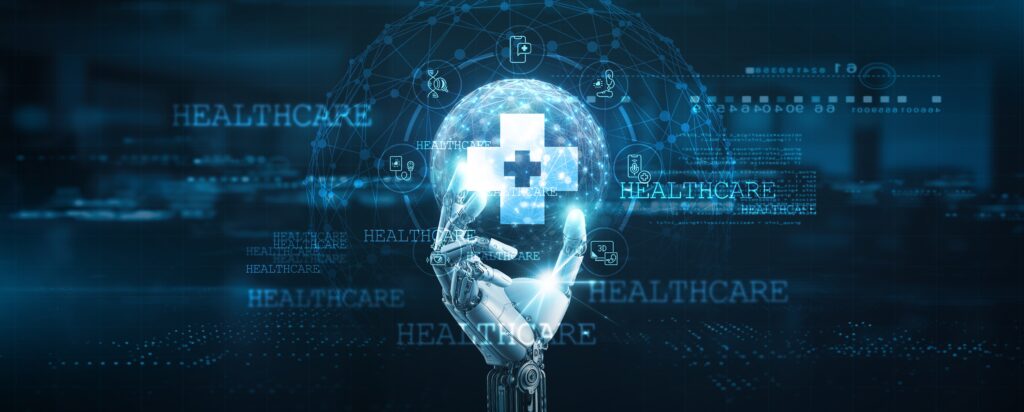Cloud Security for Life Sciences: Your Complete Guide

At a Glance:
Life sciences companies face unique cloud security challenges that require specialized solutions:
- The Stakes: Data breaches in life sciences cost an average of $10.93 million—nearly triple the global average
- The Challenge: Complex compliance requirements (HIPAA, GxP, FDA 21 CFR Part 11) meet expanding cloud environments
- The Solution: Comprehensive cloud security frameworks that protect clinical trial data, genomic research, and patient information while enabling innovation
- The Result: Secure collaboration, faster time-to-market, and maintained regulatory trust
Protect Data, Ensure Compliance, and Accelerate Innovation for Life Sciences
The life sciences industry generates more sensitive data than perhaps any other sector. From clinical trial results worth billions in R&D investment to genomic sequences that could revolutionize personalized medicine, this data represents both tremendous value and enormous risk.
Recent cyberattacks on major pharmaceutical companies have exposed a troubling reality: traditional security approaches aren’t sufficient for modern cloud environments.
When Merck suffered a NotPetya attack that cost the company $870 million, it became clear that life sciences organizations need purpose-built cloud security solutions.
This guide explores how cloud security for life sciences goes beyond standard IT protection—it’s about safeguarding the future of healthcare innovation while meeting the industry’s most stringent compliance requirements.
Why Protecting Life Sciences Data is Vital
Life sciences companies handle some of the world’s most sensitive and valuable data. Protecting it is not only a compliance requirement but also the foundation for advancing healthcare innovation.
Data Volume and Sensitivity: Clinical trials generate massive volumes of HIPAA-protected patient data. Genomic research produces intellectual property worth millions, while regulatory submissions contain proprietary formulations and processes.
Regulatory Complexity: Compliance spans multiple frameworks: HIPAA for patient data, GxP for research and manufacturing, FDA 21 CFR Part 11 for electronic records, and GDPR for global operations. We will touch more on regulatory complexity in life sciences in the next section.
Expanding Cyber Threats: The sector is a prime target for attackers. Research data is lucrative on black markets, trial disruptions delay billion-dollar drug launches, and ransomware can freeze manufacturing and distribution.
Protecting Innovation: Strong security safeguards more than compliance—it protects the discoveries that fuel medical progress. Without it, life-changing treatments risk theft, corruption, or delay, undermining trust and slowing advances in patient care.
Compliance Regulations for Life Sciences
Life sciences organizations must juggle multiple regulatory frameworks while leveraging cloud technologies for competitive advantage. Here’s a tiered view of the regulatory constraints within the life sciences industry.
Patient Data Privacy
- HIPAA (Health Insurance Portability and Accountability Act) – U.S. regulation requiring safeguards for PHI (encryption, access controls, audit logging, BAAs).
- HITECH Act – Expands HIPAA enforcement; requires breach notifications and extends liability to business associates.
- CCPA/CPRA (California Consumer Privacy Act / Privacy Rights Act) – Protects consumer data, including health information outside HIPAA’s scope.
Clinical & Research Compliance
- GxP (Good Practice Guidelines) – Umbrella covering GMP, GCP, and GLP; enforces validated systems, change controls, audit trails, and electronic signatures.
- FDA 21 CFR Part 11 – Regulates electronic records and signatures in FDA-regulated activities; ensures system validation, authentication, and data integrity.
- ICH Guidelines (International Council for Harmonisation) – Global standards for clinical trials, drug development, and safety/efficacy reporting.
Global Data Governance
- GDPR (General Data Protection Regulation) – EU regulation requiring lawful data processing, patient consent, and restrictions on cross-border transfers.
- Data Residency & Localization Laws – National laws requiring data (e.g., patient or genomic datasets) to remain within specific jurisdictions.
Corporate & Financial Oversight
- SOX (Sarbanes–Oxley Act) – U.S. regulation for publicly traded companies; mandates financial data integrity, internal controls, and IT system compliance.
- NIST Cybersecurity Framework & ISO/IEC 27001 – Widely adopted standards to demonstrate security maturity, risk management, and resilience in vendor programs.
The Cost of Weak Cloud Security for Life Sciences
Regulatory Non-Compliance: Breaches exposing PHI or PII can lead to costly HIPAA violations, while lapses in GxP processes threaten the validity of clinical trial data and risk FDA rejection of drug approvals.
For organizations operating globally, GDPR penalties for mishandling personal data only add to the regulatory burden.
Loss of Intellectual Property: When valuable R&D data—including drug formulas or genomic research—is stolen, competitors may gain critical time-to-market advantages. Pharmaceutical firms, in particular, can face average breach costs of $5.1 million per incident, underscoring the high stakes of IP theft.
Clinical & Patient Impact: Cyberattacks compromising clinical data can corrupt trial results or delay patient treatments. One study found that data breaches in hospitals were associated with a significant increase in 30-day mortality rates for acute myocardial infarction (AMI)—setbacks comparable to reversing a year’s worth of progress in care.
Operational & Financial Damage: Ransomware can grind manufacturing lines and clinical pipelines to a halt. Downtime alone in healthcare can cost around $1.9 million per day, while total downtime losses have reached $21.9 billion across recent years. Pharmaceutical breaches already average multimillion-dollar impacts, and disruption to production or trials can delay time-to-market, compounding financial losses.
Reputational Harm: Once patient trust, investor confidence, or regulatory goodwill is lost, it can be nearly impossible to recover. Breaches that expose sensitive data or disrupt critical operations can severely damage credibility—and the long-term viability—of even well-established life sciences organizations.
10 Best Practices for Life Sciences Cloud Security
Implementing effective cloud security requires a comprehensive approach that addresses the industry’s unique requirements:
1. Data Encryption at Every Level
To ensure data security, it’s essential to prioritize both encryption in transit and at rest.
For data transfers, implementing TLS 1.3 provides robust protection, while VPN connections safeguard remote research teams. Additionally, securing API connections between cloud services and on-premises systems ensures seamless and protected communication.
When it comes to encryption at rest, using AES-256 encryption guarantees strong security for stored data. Offering customer-managed encryption keys allows maximum control, and applying separate encryption standards for different data classifications, such as PHI, research data, and manufacturing data, ensures tailored protection for sensitive information.
2. Identity and Access Management (IAM) for Life Sciences
Role-Based Access Control (RBAC) ensures data security by defining roles based on job functions, such as clinical researchers, data analysts, or regulatory affairs, while adhering to the principle of least privilege and conducting regular access reviews with automated de-provisioning.
Additionally, As phishing attacks grow more sophisticated, organizations must put foundational cybersecurity practices in place—such as multi-factor authentication, regular employee training, and strict access controls—to stay ahead of evolving threats.
3. Continuous Compliance Monitoring
Ensure your security platform is equipped with real-time monitoring and alignment with HIPAA, GxP, and FDA requirements, while also providing automated fixes for common misconfigurations. With detailed compliance dashboards for audit reporting, staying on top of regulations has never been easier.
Additionally, comprehensive audit logging tracks all data access and system changes, with automated alerts for suspicious activities, seamlessly integrating with SIEM systems to enhance security monitoring.
4. Cloud Managed Detection and Response for Healthcare
Specialized threat intelligence for healthcare is vital for protecting sensitive healthcare data and ensuring operations run smoothly. Industry-specific monitoring, custom detection rules, and tailored response plans help prevent breaches like research data theft and minimize disruptions. Prioritizing healthcare-focused detection and response strategies ensures compliance and safeguards critical research.
5. Data Classification and Handling
To ensure the security of clinical trial data, it is crucial to separate it from other business information and implement data loss prevention (DLP) tools to block unauthorized transfers. Additionally, using secure and properly validated clinical trial management systems (CTMS) helps safeguard sensitive information and maintain compliance.
6. Patient Privacy Protection
Organizations must prioritize data privacy through the de-identification of patient information wherever possible, utilize secure multi-party computation to enable collaborative research without compromising confidentiality, and implement consent management systems to ensure patient permissions are properly tracked and respected.
7. Storage and Processing
Purpose-built cloud platforms ensure secure and scalable handling of research data. Advanced security measures like federated learning protect privacy by enabling analysis without moving data, while secure containerization isolates workflows to maintain data integrity and reduce risk.
8. Intellectual Property Protection
Protecting intellectual property in life sciences research requires strategies like digital rights management, algorithm tracking, and secure collaboration platforms. These approaches prevent misuse while enabling safe data sharing across teams.
9. Industrial Control System (ICS) Security
In manufacturing and lab environments, ICS security is critical to protecting both operations and data. Network segmentation between IT and operational technology (OT) systems reduces attack surfaces and helps contain threats. Secure remote monitoring solutions maintain visibility into production processes without introducing unnecessary vulnerabilities. Finally, strong change control procedures ensure that system updates are carefully reviewed and tested, minimizing the risk of inadvertently introducing new security gaps.
10. Strategic Partnerships for Specialized Life Sciences Security
While internal controls and technology are critical, many life sciences organizations accelerate their security maturity by partnering with strategic cloud security experts. These partners bring deep knowledge of protecting sensitive data types unique to the industry—PHI, PII, genomic data, intellectual property, and clinical trial results.
Partner with ClearDATA for Life Sciences Cloud Security Excellence
Secure

Gain proactive, cloud-native security tailored for healthcare.
With automated guardrails, continuous monitoring, and real-time remediation across AWS, Azure, and GCP, you stay protected against misconfigurations and advanced cyber threats.
Compliant
 Work confidently with compliance built into everything, not bolted on.
Work confidently with compliance built into everything, not bolted on.
Benefit from HITRUST inheritance and healthcare-first frameworks, so you can stay audit-ready for HIPAA, GDPR, and other regulations—reducing both compliance risk and operational overhead.
Resilient

Leverage and accelerate in stable, scalable, and cost-optimized multi-cloud environments under any conditions.
Operate in a cloud-native architecture, combined with FinOps, to ensure predictable costs, high availability, and seamless scaling—even as your business demands shift.
The future of life sciences depends on organizations that can innovate rapidly while maintaining the highest security and compliance standards. ClearDATA understands the unique challenges facing pharmaceutical, biotech, and medical research organizations.
Ready to secure your life sciences organization’s cloud journey?
Contact a ClearDATA cloud advisor today to learn how our specialized approach to cloud security can protect your most valuable assets while accelerating your mission to improve patient outcomes.
Ready to build a smarter, safer cloud?



